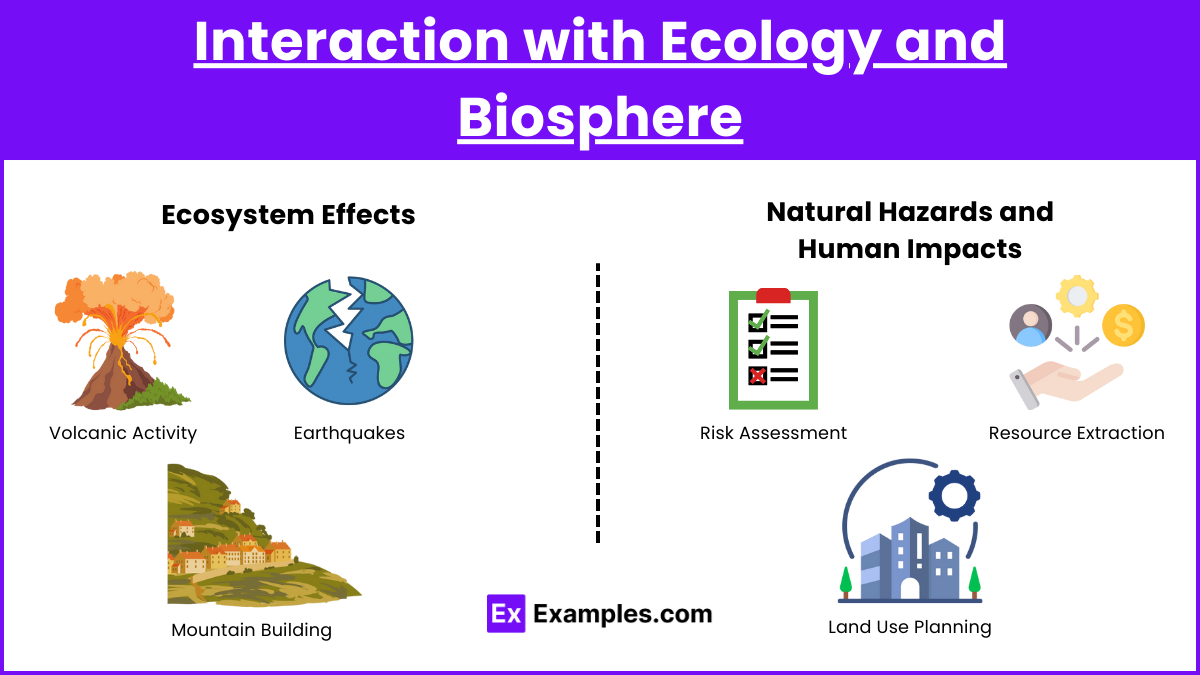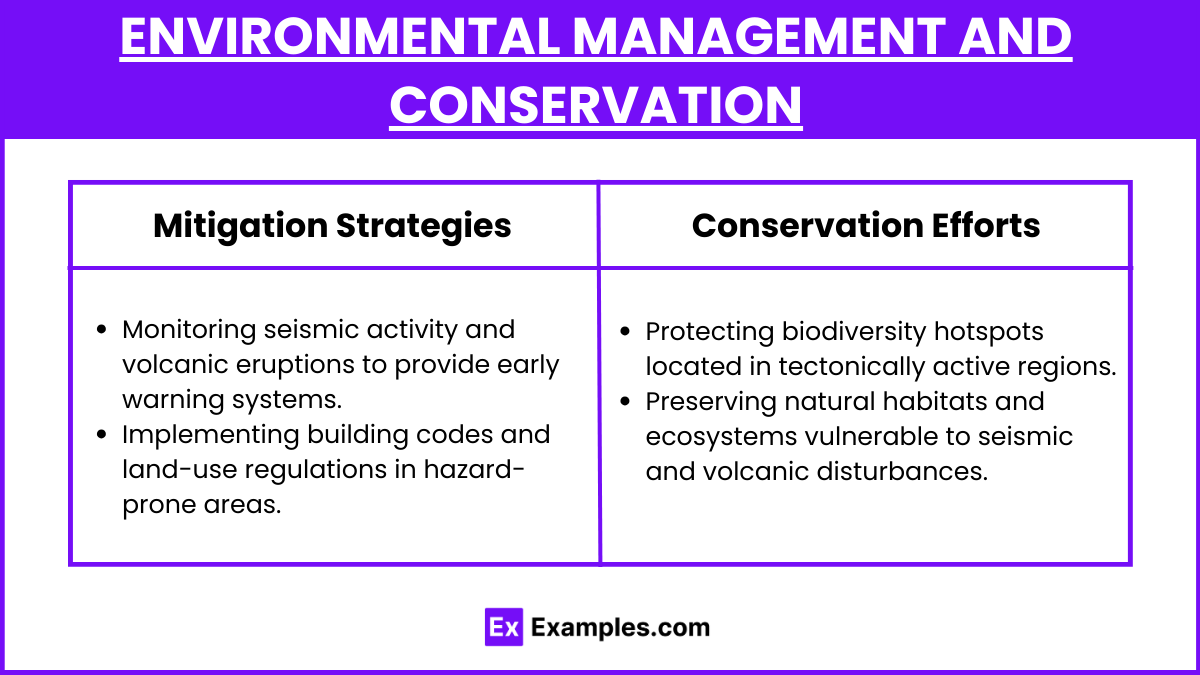Tectonic plates are large sections of the Earth’s lithosphere that float on the semi-fluid asthenosphere beneath them, shaping the planet’s geology through movements such as subduction, collision, and spreading. These movements not only influence geological formations and natural hazards like earthquakes and volcanic eruptions but also profoundly impact the biosphere and ecosystems. For instance, tectonic activity can create diverse habitats, alter landscapes, and affect nutrient cycles, thus influencing biodiversity patterns across different regions. Understanding the dynamics of tectonic plates is crucial for comprehending Earth’s environmental processes and the interconnectedness between geology, ecology, and the sustainability of life on our planet.
Learning Objective
Tectonic Plates learning objectives encompass understanding the movement and interactions of Earth’s lithospheric plates, their impact on natural phenomena like earthquakes and volcanic activity, and the resulting effects on organisms and flora and fauna. Students will analyze how tectonic processes influence climate changes through volcanic emissions and landform alterations, and evaluate their role in shaping biodiversity patterns. Mastery involves interpreting plate boundary types (e.g., convergent, divergent), predicting geological hazards, and assessing the implications for ecosystem resilience and human adaptation to geological dynamics in the AP Environmental Studies exam.
Plate Boundaries and Movements

- Types of Plate Boundaries
- Divergent Boundaries: Plates move away from each other. This movement creates rift valleys on land (e.g., East African Rift) and mid-ocean ridges (e.g., Mid-Atlantic Ridge).
- Convergent Boundaries: Plates move toward each other. Depending on the type of crust involved, convergent boundaries can form subduction zones (where one plate is forced beneath another) or collision zones (where plates collide and push upwards, forming mountain ranges).
- Transform Boundaries: Plates slide past each other horizontally. This movement can cause earthquakes along fault lines (e.g., San Andreas Fault in California).
- Impact on Geological Processes
- Earthquakes: Result from the sudden release of energy along faults when plates move or grind against each other.
- Volcanic Activity: Occurs primarily at convergent and divergent boundaries where magma rises from the mantle to the Earth’s surface.
- Mountain Building: Collision of continental plates at convergent boundaries leads to the uplift of mountain ranges (e.g., Himalayas, Andes).
Interaction with Ecology and Biosphere

- Ecosystem Effects
- Volcanic Activity: Volcanic eruptions release ash and gases that can alter local ecosystems. Ash deposition enriches soil fertility, promoting plant growth, while gases like sulfur dioxide can lead to acid rain.
- Earthquakes: Ground shaking can trigger landslides and tsunamis, disrupting terrestrial and marine ecosystems.
- Mountain Building: Creates diverse habitats due to elevation changes and climatic gradients, fostering unique biodiversity.
- Natural Hazards and Human Impacts
- Risk Assessment: Understanding plate tectonics helps predict seismic and volcanic hazards, allowing for better disaster preparedness and mitigation strategies.
- Resource Extraction: Geological processes associated with plate tectonics concentrate mineral resources (e.g., gold, copper) in specific regions, influencing mining activities and environmental impacts.
- Land Use Planning: Identifying earthquake-prone areas and volcanic zones informs urban planning and infrastructure development to minimize risks to human populations and ecosystems.
Case Studies
- Ring of Fire
- A horseshoe-shaped zone of high volcanic and seismic activity around the Pacific Ocean due to multiple convergent plate boundaries.
- Impacts: Significant volcanic eruptions (e.g., Mount St. Helens) and frequent earthquakes (e.g., Japan, Indonesia).
- Mid-Atlantic Ridge
- Divergent boundary between the Eurasian Plate and North American Plate in the Atlantic Ocean.
- Impacts: Creation of new oceanic crust, spreading of seafloor, and geothermal activity supporting unique deep-sea ecosystems.
Environmental Management and Conservation

- Mitigation Strategies
- Monitoring seismic activity and volcanic eruptions to provide early warning systems.
- Implementing building codes and land-use regulations in hazard-prone areas.
- Promoting sustainable practices in mining and resource extraction to minimize environmental degradation.
- Conservation Efforts
- Protecting biodiversity hotspots located in tectonically active regions.
- Preserving natural habitats and ecosystems vulnerable to seismic and volcanic disturbances.


